Table of contents
- MotoGP seamless gears and technology in the Superbike World Championship How’s it going and what’s the point?
- Weight shift and tire slip
- Shift when drifting without suspension reactions
- Leverage crushed quite a few balls
- Pawls and a thick output shaft solve the problem
- Automatic downshift on the BMW Superbike
- This is how we switch normalos
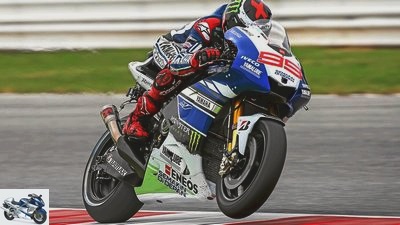
2snap
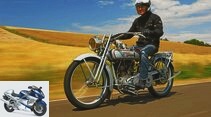
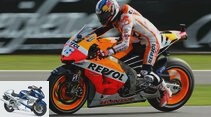
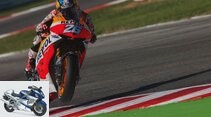
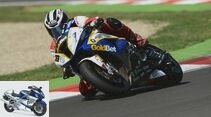
22nd pictures
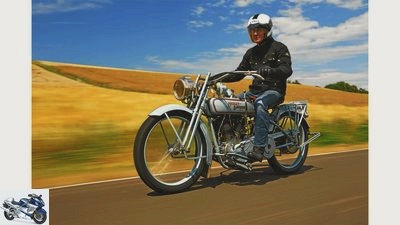
Gargolov
1/22
With the motorcycles of the early years with their fuel shift levers, a gear change took what felt like an eternity.
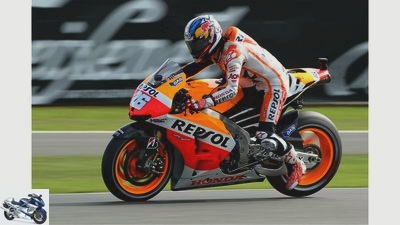
2Snap
2/22
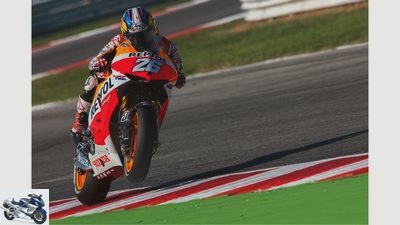
2Snap
3/22
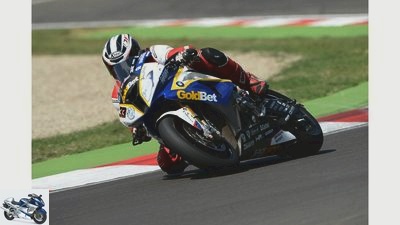
BMW
4/22
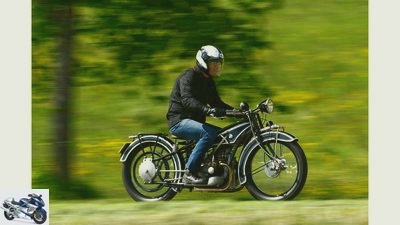
Gargolov
5/22
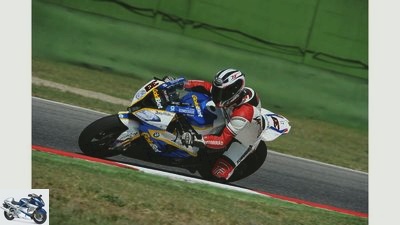
BMW
6/22
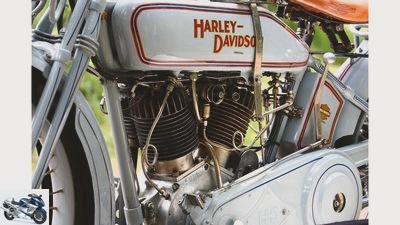
Gargolov
7/22
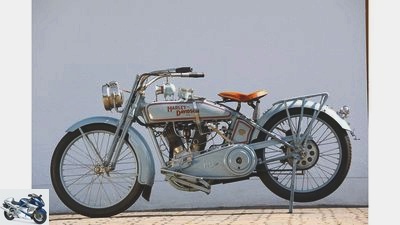
Gargolov
8/22
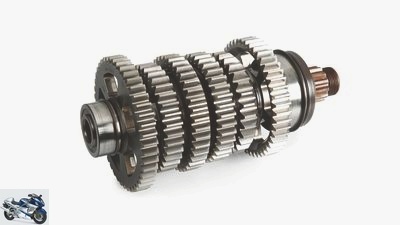
Bilski
9/22
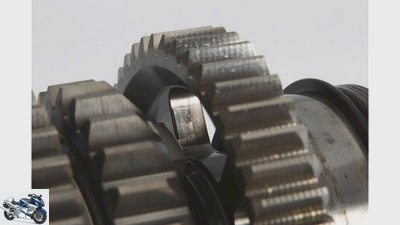
Bilski
10/22
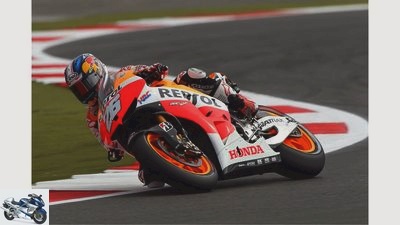
2Snap
11/22

Cook
12/22
The gear of the Z 1000 is designed as a cassette gear, its internal assemblies sit on a common base plate and can be pulled out of the housing without having to dismantle the motor.
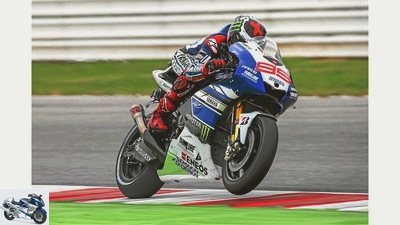
2Snap
13/22
Today the factory racers of the MotoGP have gearboxes that can be shifted at lightning speed without interrupting the tractive effort.
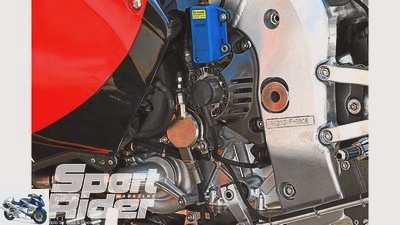
gold & Goose
14/22
Load cell at the gearbox output of Dani Pedrosa’s Honda. It measures the torque before and after the gear change …
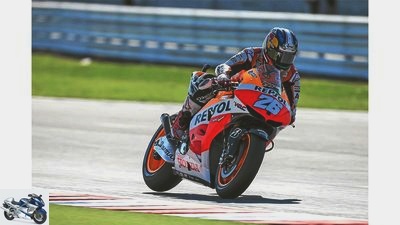
2Snap
15/22
… The additional connection to the clutch hydraulics is probably just a switch; automatic actuation is prohibited according to the regulations.
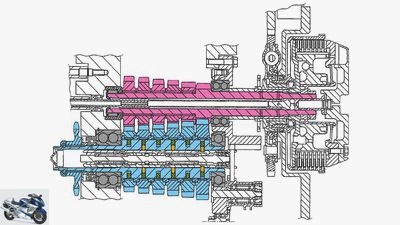
16/22
The gears are arranged in the order of the gears and are easy to understand. They are stuck on the input shaft (purple), those on the output shaft (blue) rotate loosely when idling. Gearbox bearings dimensioned for the load: (gray) Because of the chain tension, the pinion-side bearing is the strongest.
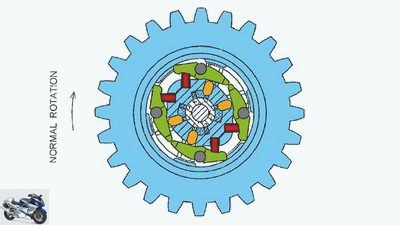
17/22
The pawls (green) are located inside the gear wheels on the output side. They are designed as rocker arms. If a recess in the shift gate releases a pawl (yellow), its power-transmitting arm is pushed upwards by a spring mechanism (red), and the gear wheel and gear shaft are connected.
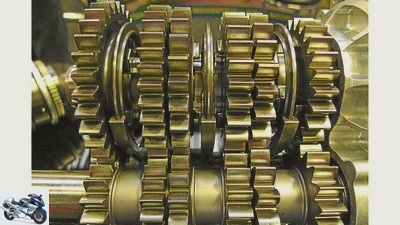
Spalding
18/22
The optimized variant of a dog gear: Here, too, the gears are arranged in the order of the gear steps. Three shift rings, moved by delicate shift forks, each connect two gear wheels in the sequence of gears with the output shaft. Whether Yamaha and Ducati use such a construction remains questionable. In contrast to the Honda transmission, there is no patent specification.
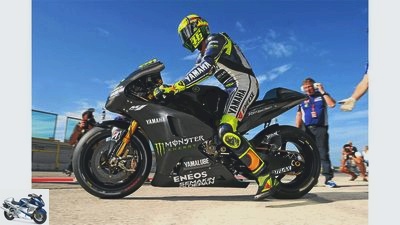
gold & Goose
19/22
In tests on the Monday after the Misano GP, Valentino Rossi drove this M1 among others. As with the Honda, there are all kinds of electronics at the transmission output, which the seamless transmission perfects.

BMW
20/22
MOTORRAD tester Georg Jelicic on the Superbike BMW in Imola and shortly before a new experience: downshifting without using the clutch.
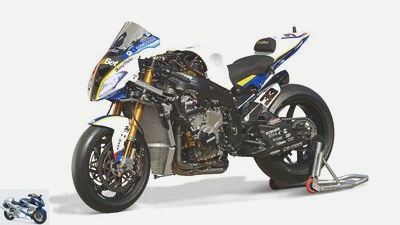
BMW
21/22
A year and a quarter ago, Andrea Dosoli, Marco Melandri’s chief technician, said the greatest opportunity to improve lap times was in the “management” of the powertrain. BMW demonstrates how well this works, but hides some details behind a carbon screen.
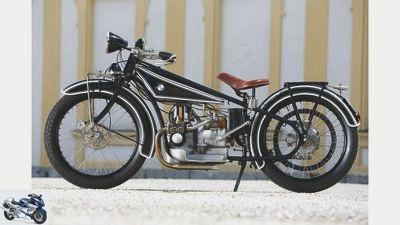
Gargolov
22/22
Sports & scene
Motorsport
Transmission technology in racing
MotoGP seamless gears and technology in the Superbike World Championship
How’s it going and what’s the point?
MotoGP factory racers have gears that can be shifted at lightning speed without interrupting the tractive effort. That is why they are called “seamless transmissions”. In the Superbike World Championship, on the other hand, conventional transmissions are pepped up with lots of electronics. How does it work – and what do they bring in the race?
Ralf Schneider
10/10/2013
We see the crucial phase of a Grand Prix. The pilots drive through a long curve, their rear tires work on the slip limit and draw fine black lines. We hear the drivers shift up in an inclined position before they sprint down the straight ahead. If they had a normal gearbox, the tire tracks would be interrupted at this point and would only start again a few centimeters further forward; Signs of a brief interruption in the pulling force and its restart.
Buy complete article
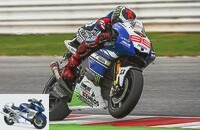
MotoGP seamless gears and technology in the Superbike World Championship
How’s it going and what’s the point?
6 pages) as PDF
€ 2.00
Buy now
Weight shift and tire slip
Even the interruption that lasts only a few hundredths of a second in a conventional transmission initially causes weight to be shifted forwards, then the weight moves backwards again. Tire slip, which suddenly stops and then starts again, intensifies the effect. Because the motorcycles are still at an angle of about 45 degrees, the resulting compression and rebound forces can only be compensated by the spring elements to about 70 percent, but their travel is almost completely used up anyway due to the radial forces acting in the inclined position.
The tires, which are transmitting lateral and driving forces at their physical limit at this moment, suddenly also have to cushion force peaks. Steering torques and small slides are the result that the driver feels. Perhaps he will still keep the gas fully open, but in any case the tire will suffer additional stress. At the GP in Misano, you have to accelerate vehemently from each of the five left turns. And the engines rev up so quickly that practically no acceleration phase remains in a lean position without a gear change. With 28 racing laps, the scenario described above adds up to 140 times additional stress on the rear tire.
Shift when drifting without suspension reactions
Or 140 times less with a so-called seamless gear. Plus the option of shifting gears while drifting without any suspension reactions. Compared to the omission of the switching pauses, these are much greater advantages. But how do they come about? Regardless of whether you look at the solution patented by Honda or the systems that Ducati and Yamaha presumably use, all transmissions will have two things in common: firstly, the masses of the parts required for a gear change and their travel are extremely reduced, and secondly, they are designed in such a way that two gears are simultaneously engaged for a period of a few fractions of a second. Before one gear pair fails, the other has already taken over.
To achieve this, Honda has changed the direction of the actual shifting process compared to the conventional transmission; the pawls, which successively connect the loose gear wheels of the output shaft to the shaft in a non-positive manner, move, like rocker arms, in the radial direction, i.e. away from the center of the shaft outwards. They are very small and only cover a tiny distance. Curiously, the arrangement of the gears is exactly the same as in the draw key gears from Hercules and Zundapp in the 1970s and 1980s. In these, the idler gears were connected to the output shaft by balls, which were pressed by a conical sliding piece – the draw key – out of the center of the hollow shaft into a recess in the gears.
Leverage crushed quite a few balls
If the driver shifted into the next gear, the drawstring was pushed a little further and pushed the balls of the next gear upwards, while the others fell back into their starting position. In their version at the time, these gears could only transmit low torques. The reason: The torque of the motor, reduced by the primary drive, and the first gear wheel of a pair act on the toothing of the gear wheel, i.e. on the outside. However, it is transferred from the gear to the output shaft much further inside, and the resulting leverage crushes quite a few balls.
Pawls and a thick output shaft solve the problem
Honda engineers counter this problem with a thick output shaft and the aforementioned pawls. They are mounted on stable axes that are parallel to the output shaft in cutouts. The torque is thus transmitted four times per gear and relatively “broadly” instead of selectively as in the earlier 50s. The pawls are engaged by an almost fine mechanical spring mechanism, and are disengaged by coulisse, i.e. four metal strips with recesses that are drawn parallel to the gear shaft. It is the precisely measured length of these recesses that enables two pairs of gear wheels to be used simultaneously for a short time.
The second option, seamlessly changing gears, retains the axial shifting direction of conventional claw gears. Instead of pushing entire gears or even double gears and therefore a large mass of steel to the side, as in modern series motorcycles, only locking rings are moved by extremely thin shift forks. Whether three locking rings each connect two gears directly to the shaft or whether the rings accomplish this via a fixed intermediate piece, as intended by the design of the British company Zeroshift, does not change the principle. Here, the length and shape of the claws and recesses of rings and gears are crucial for seamless power transmission.
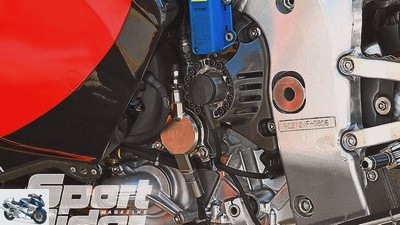
gold & Goose
Load cell at the transmission output of Dani Pedrosa’s Honda. It measures the torque before and after the gear change.
Both basic designs are completed by an important auxiliary unit: a load cell at the transmission output plus sophisticated electronics. The torque acting on the rear wheel can be recorded by the load cell at the moment of shifting and the electronic throttle valve control can provide exactly the same torque immediately afterwards, although the engine develops a much higher torque after shifting. Only this additional system enables a steady drift despite upshifting.
Automatic downshift on the BMW Superbike
With the imaginative use of electronics, BMW has also considerably expanded the possibilities of a conventional dog gear. Aprilia, Ducati, Honda, and Kawasaki may use similar systems, but they provide little to no information about them. MOTORRAD tester Georg Jelicic was able to drive Marco Melandri’s World Championship machine and reported enthusiastically about what he called the “automatic downshift”. O-Ton Jelicic: “You just have to close the gas, brake and downshift before the curve. The left hand can and should be kept away from the clutch. Double-declutching, braking torque – the system controls everything. You can fully concentrate on braking and turning in. “
Everyone can understand the first part of this achievement for themselves by closing the gas while driving in a middle gear, putting the gearshift foot on the lever and then immediately giving a short throttle. The next lower gear will click into place cleanly. In the racing BMW, it is not the driver that causes the throttle that temporarily releases the load from the transmission, but the electronics. However, the BMW technicians do not reveal whether it only regulates the braking torque of the drive train via the throttle valve position or uses a channel of an ABS pressure modulator for hydraulic clutch actuation. The corresponding parts were hidden behind carbon panels, which not only protect against a fall, but also from prying eyes.

Super athlete
BMW works superbike, Superstock HP4 and series HP4 in the test
Track test on the slopes of Imola
read more
This is how we switch normalos
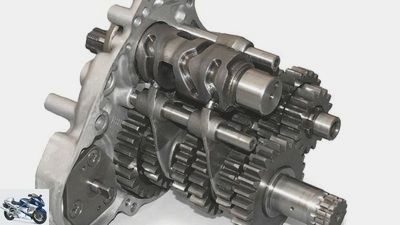
Cook
The gear of the Z 1000 is designed as a cassette gear, its internal assemblies sit on a common base plate and can be pulled out of the housing without having to dismantle the motor.
When a motorcyclist presses the gearshift lever on a production machine, he turns the gearshift drum. You cannot see the mechanism that ensures that this roller is always rotated at exactly the right angle for engaging the next gear or idling. The soul of this assembly is a small metal plate with precisely placed grids. They ensure precise switching.
And so it goes on: The grooves of the shift drum, which are connected to the shift forks via a driving pin, move them sideways according to a carefully worked out plan. The shift forks, in turn, move individual gears. They are either positively connected to their gear shaft or rotate loosely. Then they have claws or suitable recesses on the flanks with which they dock on a fixed wheel in the corresponding gear. The person opposite must of course become a loose wheel at the same time, otherwise the transmission would be destroyed.
Related articles
-
Technology: Seamless transmission from the Honda RC 213 V.
2snap Sports & scene Motorsport Technology: Seamless transmission from the Honda RC 213 V. MOTOGP technology seamless gear of the Honda RC 213 V Full…
-
Ducati patent: Seamless transmission from MotoGP
Ducati. 6th pictures Ducati 1/6 The seamless gears from MotoGP are known. For a good 10 years now, the drivers have been shifting load changes here….
-
fact motorcycles Technology: automatic Technology: automatic Automatic transmission Our everyday life is becoming more and more complex, and at the same…
-
fact counselor technology & future Technology: circuit Technology: circuit In a hurry Clear the road, step on the gas and quickly step through the aisles…
-
PS reader question about motorcycle technology – translation for the racetrack
Werner Koch 14th pictures factstudio.de 1/14 How do you find the right translation for the racetrack? factstudio.de 2/14 Quick change transmissions in GP…
-
counselor technology & future Technology: belt drive technology Belt drive Full automation instead of full employment, just step on the gas instead of…
-
Technology of the 2002 model year
motorcycles Technology of the 2002 model year Technology of the 2002 model year Undercover In the 2002 season it is the inner values that count, and…
-
Sport: Kreidler van Veen 50 cc racing machine
Nakamura motorcycles Sport: Kreidler van Veen 50 cc racing machine Sport: Kreidler van Veen 50 cc racing machine circular saw Content of If you want to…
-
BMW K model, new, for 2005: technology
MOTORCYCLE counselor technology & future BMW K model, new, for 2005: technology BMW K model, new, for 2005: technology The revealing Michael Pfeiffer…
-
Annual review test and technology
fact motorcycles Annual review test and technology Annual review test and technology Focal points What a year: We are celebrating 100 years of MOTORRAD,…